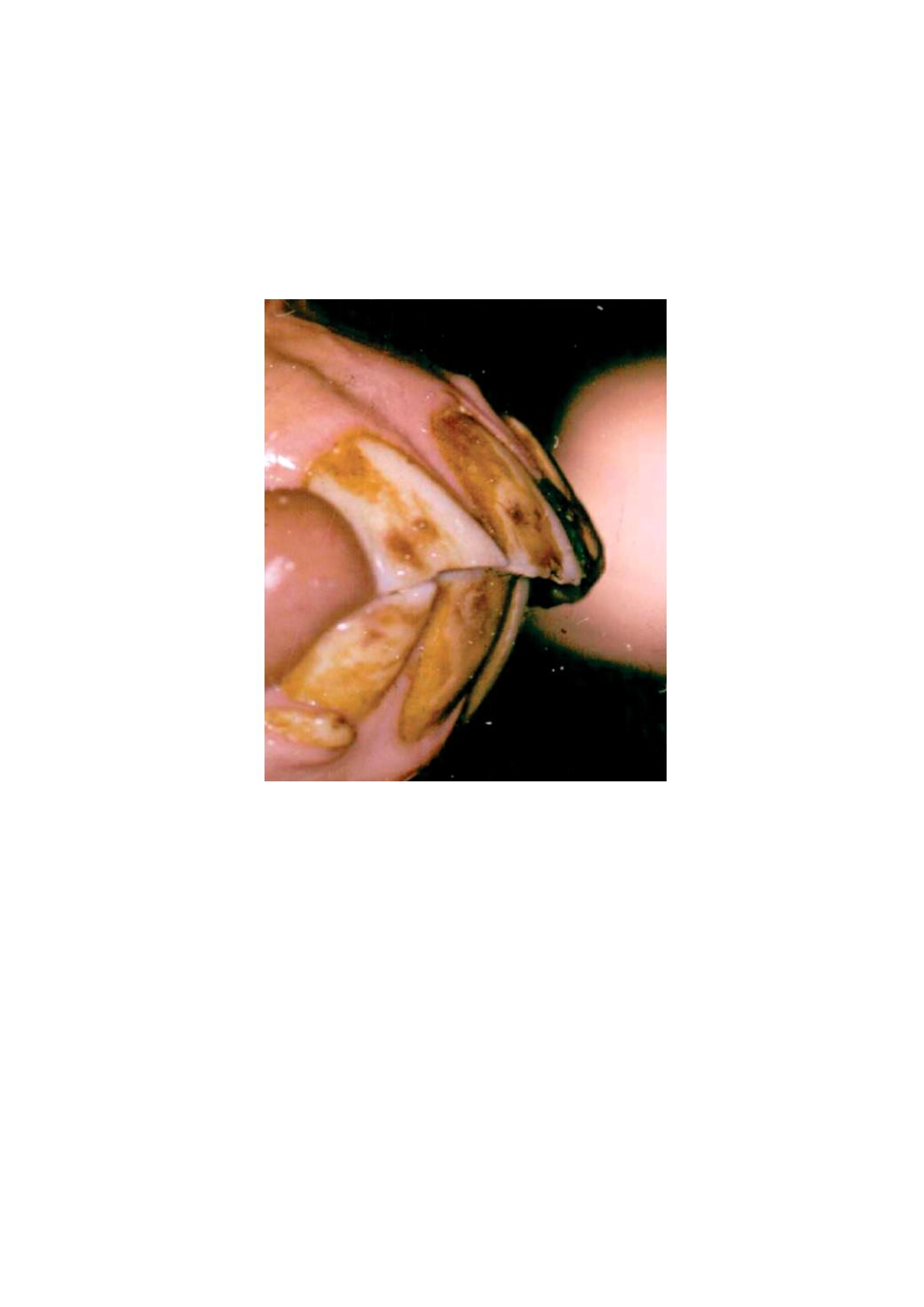
To some extent, the mandible should move in the rostral caudal direction during
chewing. This motion can be shown by raising and lowering the horse’s nose. When
the nose is pointed down, the incisor arcades’ rostral edges should be even with each
other. Raising the nose to eye level will cause the mandible to move caudally from 2
to 10 mm. The presence of a downward lip on the rostral occlusal surface of the upper
incisors indicates one of two conclusions: the horse is a true partial parrot mouth or
cheek teeth malocclusions are restricting mandibular rostral caudal motion (Fig. 2).
Figure 2. Prominent upper incisor lip secondary to untreated upper 06 hooks. After
removing the hooks, the mandible moved rostral, and the incisor arcades were even with
each other.
The distance that the mandible moves laterally can be divided into percent molar
contact and percent incisor contact
3
. As the percentage of the lateral excursion distance
when incisors remain in contact increases, the percentage of distance that molars are
in contact decreases. In some horses, molars remain in contact for such a short distance
that the horse is unable to adequately grind food. This percent molar contact has been
described as =30%
3
.
It can be difficult to determine the percentages of incisor to molar contact, because it
is difficult to push the mandible laterally to its maximum, even in sedated horses. A
simpler method for determining relative incisor contact is described below.
The author has measured the distance that the mandible moves laterally to molar
contact in 730 horses from 1 to 27 yr old. This distance, excursion to molar contact
(EMC), represents incisor contact during the chewing cycle and is highly repeatable
4
EQUINEDENTALVETS.COM CE


